Plastic grocery bags, the lint that collects in a dryer, the pits of avocados, and old newspapers usually all end up in the same place: the trash. Pratt Institute students are revealing their untapped possibilities as new design materials that can give these discarded objects a second life.
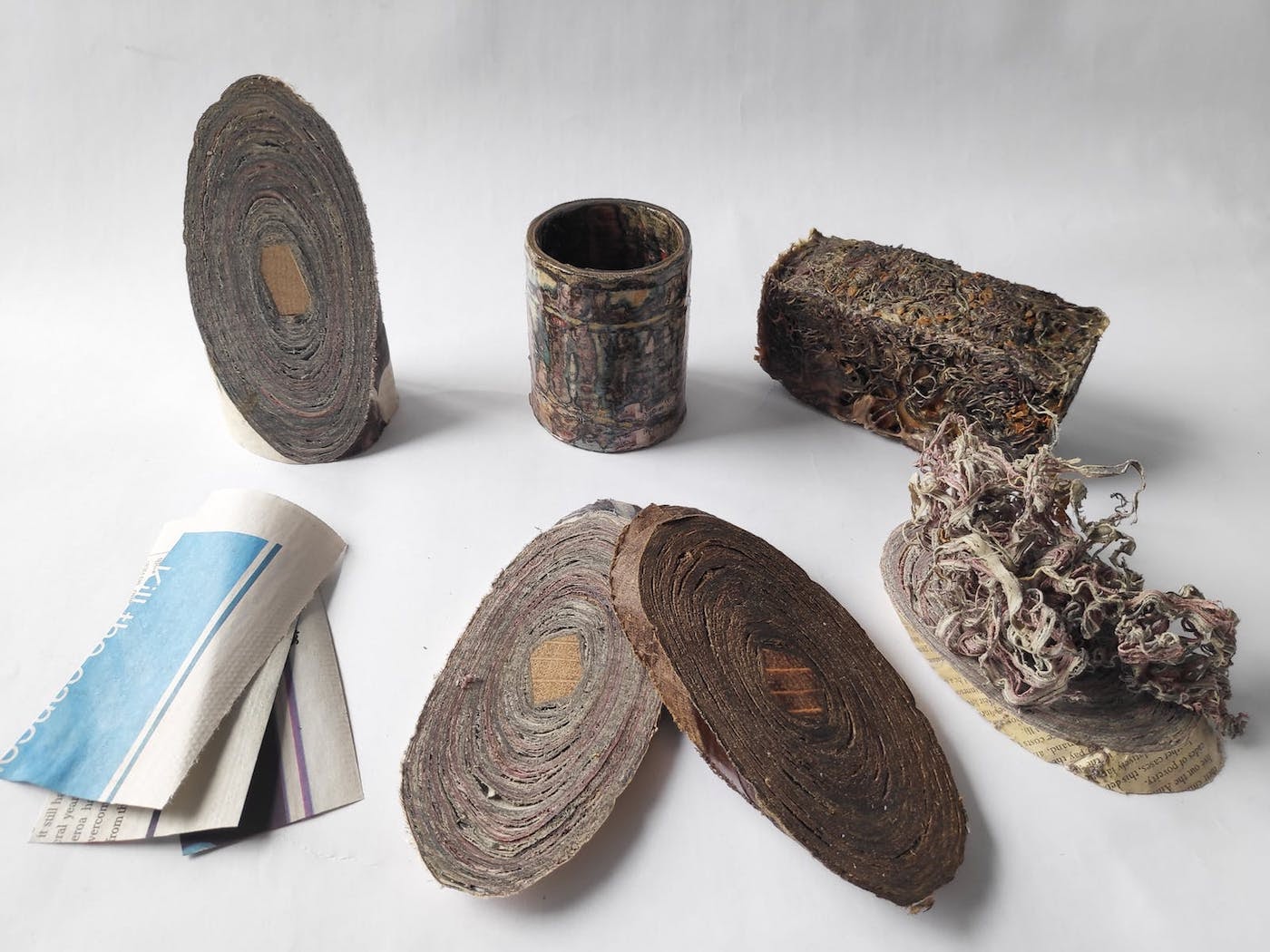 Asad Jawed Ahmed, MID ’21, “Homeware Using Newspaper Wood”
Asad Jawed Ahmed, MID ’21, “Homeware Using Newspaper Wood”
Plastic grocery bags, the lint that collects in a dryer, the pits of avocados, and old newspapers usually all end up in the same place: the trash. Pratt Institute students are revealing their untapped possibilities as new design materials that can give these discarded objects a second life.
“Pratt students are constantly making use of reclaimed material in their work,” said Jay Lemire, manager of the Material Lab in the School of Design. He cited recent projects like the Sum Waste pen by Garrett Benisch, MID ’19, which repurposes biosolids for a compostable ink pen, as well as the Givetake initiative that upcycles art supplies. Students from across disciplines are examining sustainability and finding ways to reduce waste streams, whether researching the disproportionate impact of microplastics on the Global South or using biomimicry to minimize food waste in the distribution of tomatoes. This September’s Pratt Earth Action Week, presented by the Pratt Sustainability Center, includes a textile waste webinar, a sustainable fashion panel, and a competition for students upcycling waste packaging.
“Designers at Pratt are thinking about the global waste crisis and they are quick to recognize the potential of discarded waste materials and imbue them with new meaning through design,” Lemire said.
To recognize that work, the Material Lab recently launched the Material Lab Prize, a new annual award recognizing a student or student team from any undergraduate or graduate department whose work is considering waste streams, whether through the salvaging of materials into new objects, the repurposing of refuse as raw material, or the incorporation of found materials into their practices. The winners’ work exemplifies using waste as a springboard for new design thinking.
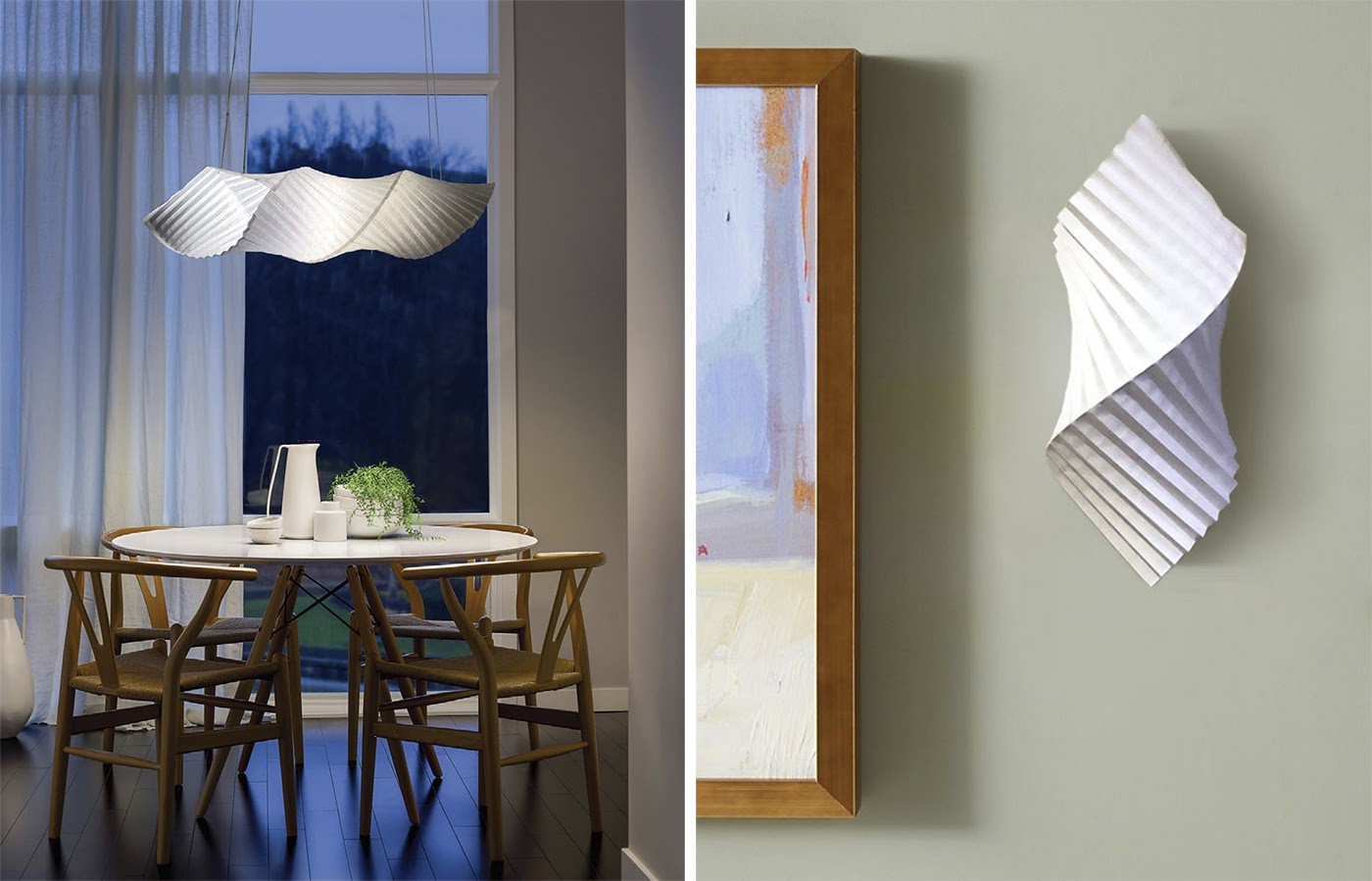 Sophia Yimeng Sun, MID ’21, “COCOON: Lamp Collection Made of Discarded HDPE Grocery Bags”
Sophia Yimeng Sun, MID ’21, “COCOON: Lamp Collection Made of Discarded HDPE Grocery Bags”
The winners of the inaugural Material Lab Prize were announced in August, selected by a jury of professional designers and artists who use waste materials in their work. The grand prize was awarded to Sophia Yimeng Sun, MID ’21, for the COCOON lamp collection. Reusing plastic grocery bags, Sun designed sconces, floor lamps, and hanging lamps all constructed from a material that is rarely recycled. “I named this project COCOON, not only because it visually complements a cocoon, but also the project is an homage to rebirth,” she stated. By elevating the qualities of plastic bags—which filter light in appealing textures—in a bonded, raw material that is folded into pleats for lampshades, COCOON encourages a rethinking of how we view waste.
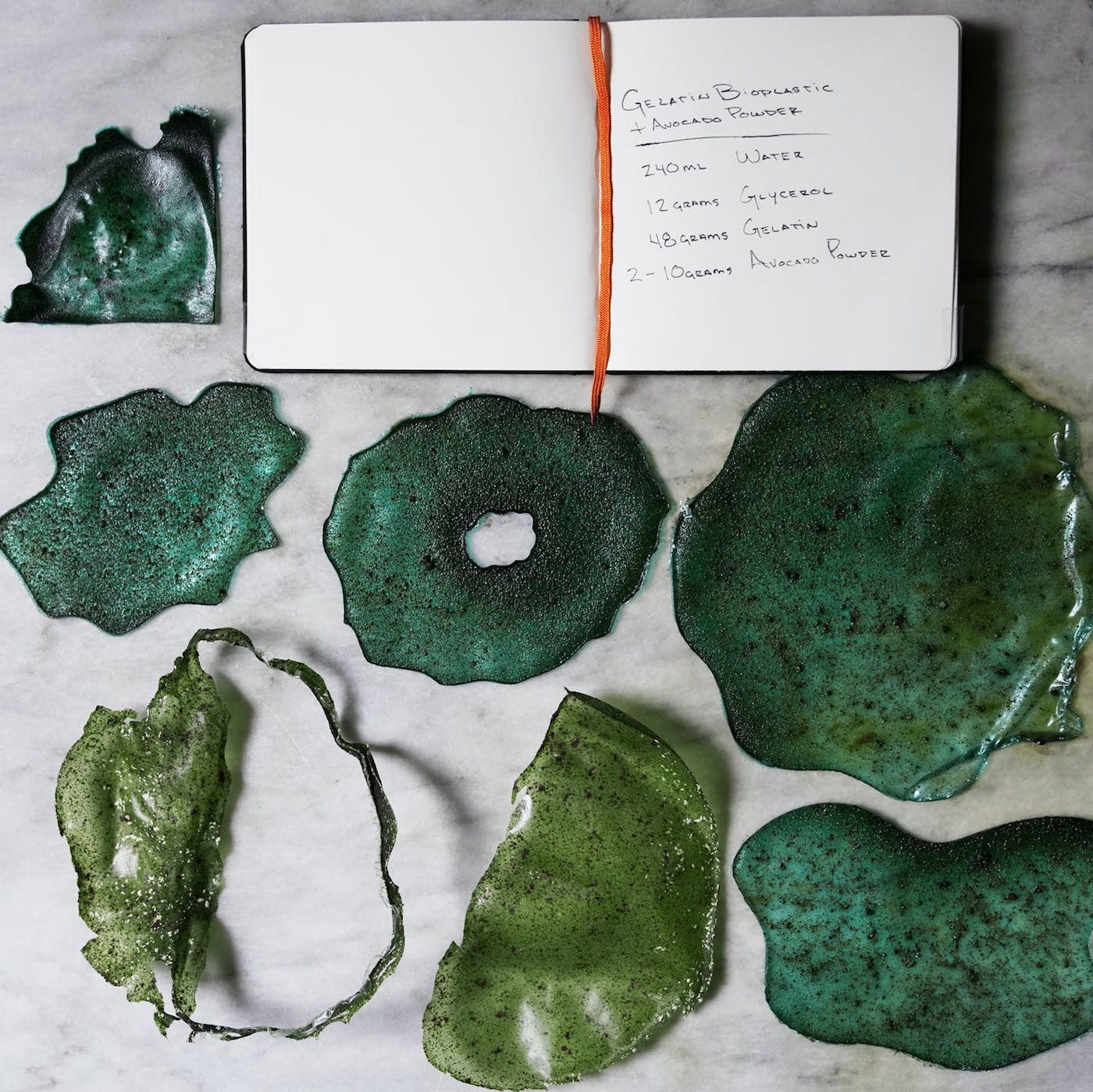 Julia Brière, student in the Sustainable Design Certificate Program, “Avocado Waste: Bioplastic and Molds”
Julia Brière, student in the Sustainable Design Certificate Program, “Avocado Waste: Bioplastic and Molds”
The second prize went to Asad Jawed Ahmed, MID ’21, for a method of making a wood-like material from discarded newspapers. The material can be used for a variety of home goods as a wood alternative, and it recalls the original source of newspapers with its ring patterns that are reminiscent of exposed trunks, intended to spark dialogue about the cutting down of trees to make disposable goods. The third prize winner—Julia Brière in the Sustainable Design Certificate Program—employed biofabrication techniques for a system to repurpose avocado pits, which frequently end up in the landfill. The bioplastic Brière made from avocado waste could be molded for diverse uses, including replacing plastic packaging that is regularly used to transport the fruit.
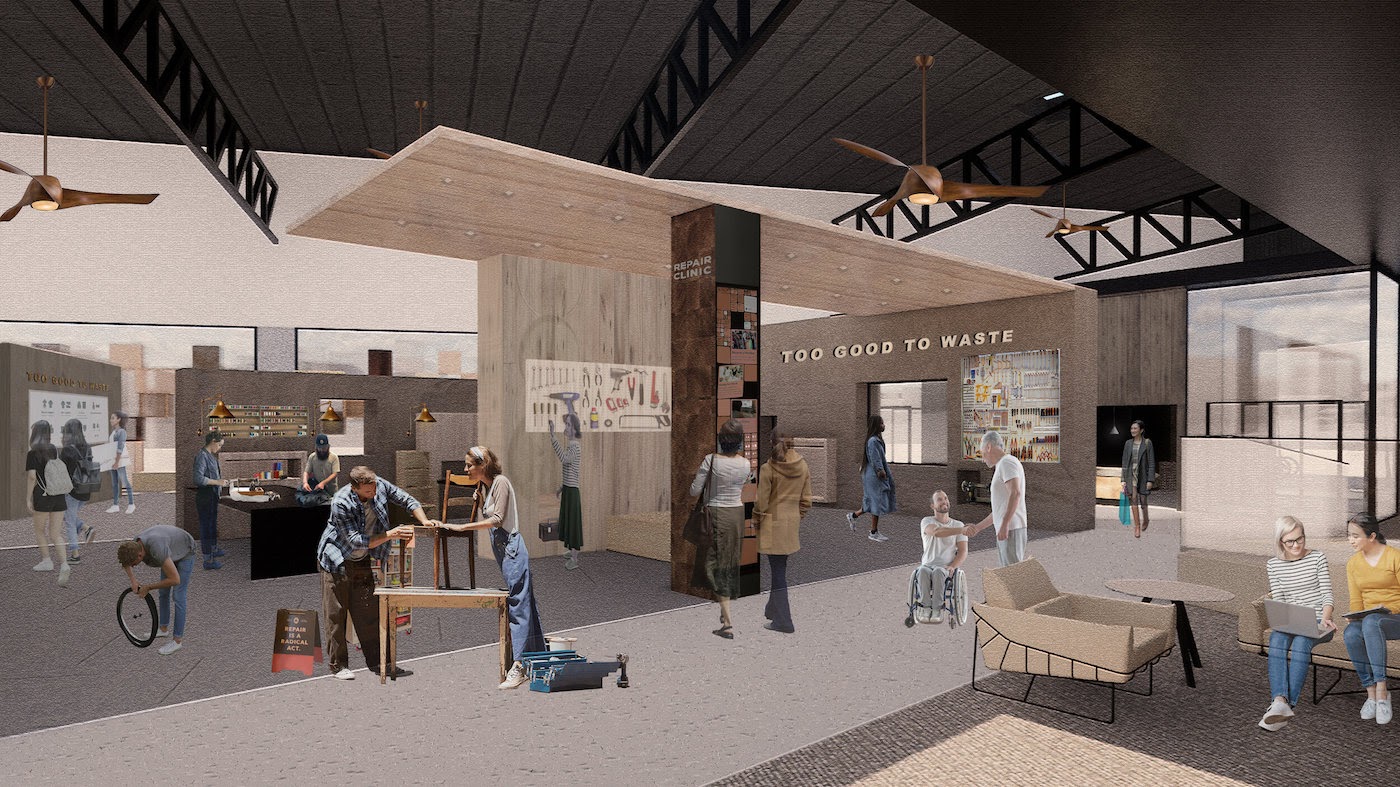 Yijin Wang, BFA Interior Design ’20, “Too Good to Waste”
Yijin Wang, BFA Interior Design ’20, “Too Good to Waste”
The three honorable mentions also celebrated the potential of discarded materials. Zoe Herring, BID ’20, investigated how dryer lint could be formed into lint-made products, a practice which could be promoted for the idle time in laundromats and sold to create a circular economy for these community spaces. “Too Good to Waste” by Yijin Wang, BFA Interior Design ’20, likewise proposes connecting a community through collaborative reuse, with the project focused on Gowanus, Brooklyn. It features a design for a facility where donated goods could be repaired in a neighborhood where waste—particularly from industrialization—has polluted the environment. Emily Stearn, BFA Fashion Design ’20, similarly explored how discarded materials could be remade. Stearn’s “Scavenger Hunt” collection of 10 looks was designed with zero waste, from textiles made from a found atlas of maps to curtains and blankets picked up at sidewalk sales sewn into new pieces.
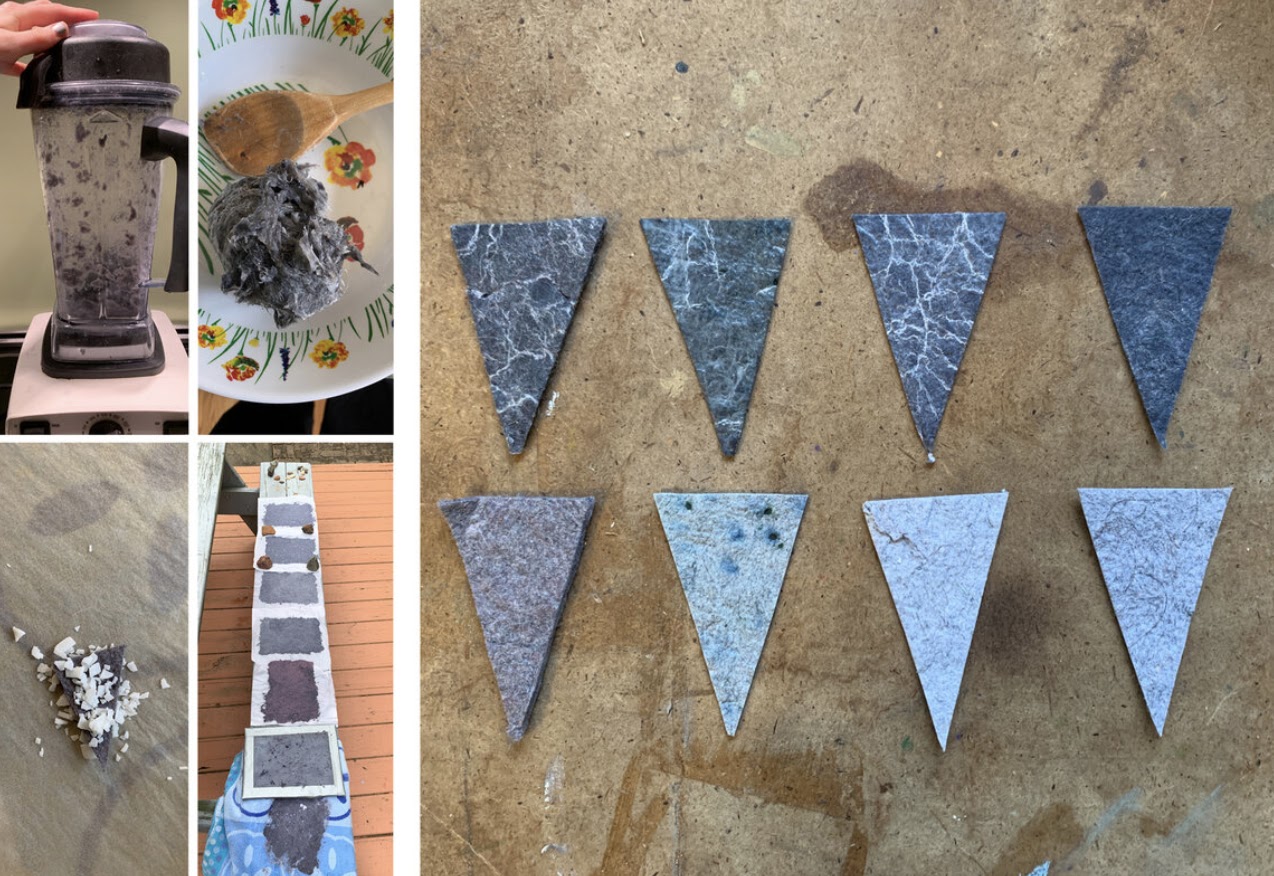 Zoe Herring, BID ’20, “Lint and the Laundromat”
Zoe Herring, BID ’20, “Lint and the Laundromat”
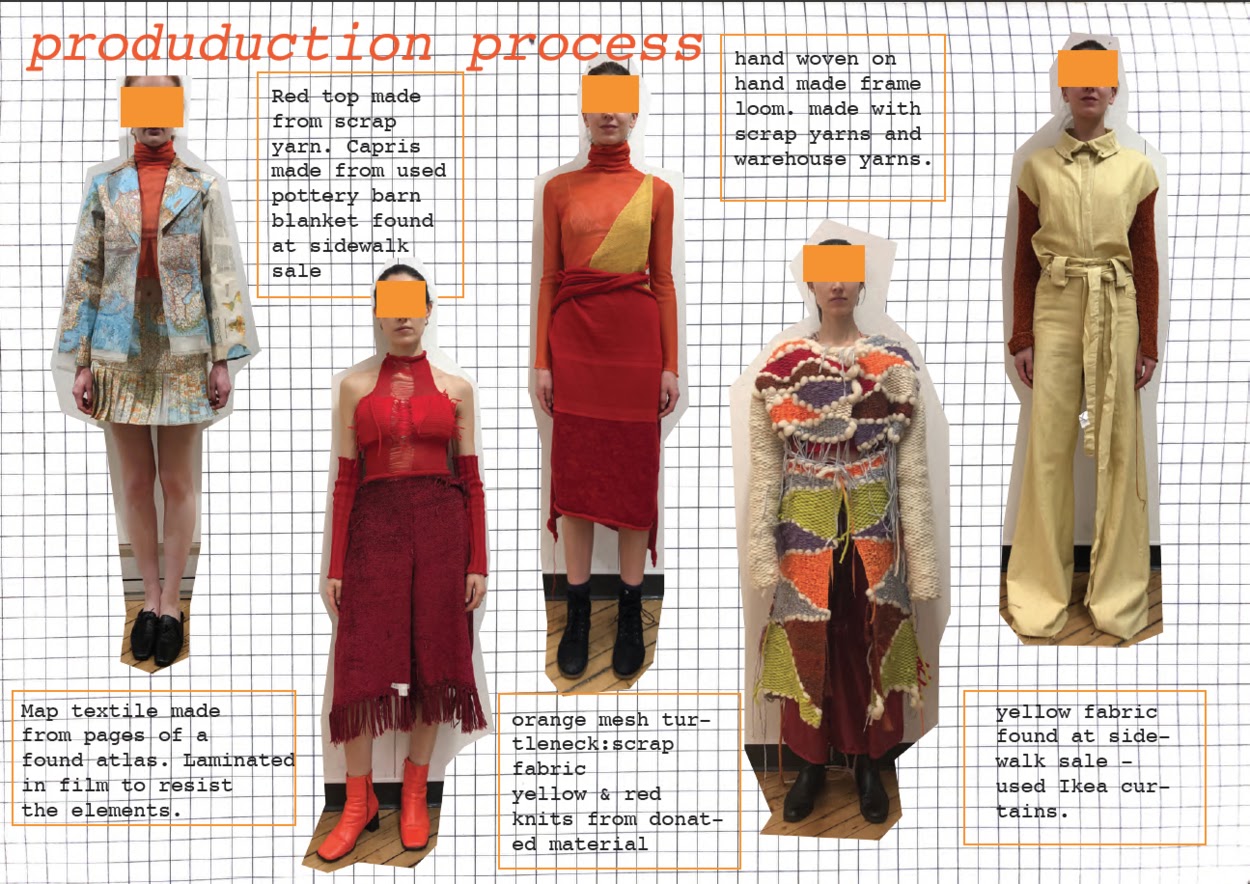 Emily Stearn, BFA Fashion Design ’20, “Scavenger Hunt”
Emily Stearn, BFA Fashion Design ’20, “Scavenger Hunt”
All of the entries are available to view online, allowing students to see how creators outside of their disciplines are engaging with related ideas. For some, such as Brière’s avocado bioplastic and Ahmed’s newspaper wood, there are step-by-step instructions so students could experiment with using the waste materials in their own work.
The Material Lab Prize reflects the ongoing work at the Material Lab as a collaborative research center for material literacy through its over 25,000 unique material samples.
“The Material Lab is, in many ways, itself the product of an upcycling effort,” Lemire explained. “Most of the design samples in our collection were originally delivered to a design or architecture firm, either because a designer sought a range of samples to compare and contrast for a specific project, or because a manufacturer or vendor wanted to have their product considered. Over time, designers and firms inadvertently amass large libraries of samples and when they purge, they often look to donate instead of sending the samples to a landfill.”
The Material Lab and the winners of the Material Lab Prize all demonstrate that there are many ways to divert single-use or disposable objects from the trash, including in the design industry where consumer goods can propel the proliferation of waste. As an ecological crisis continues to impact the world, they offer innovative ways to rethink the future of these materials beyond the landfill.
Read more about the Material Lab Prize and view all of the student submissions.